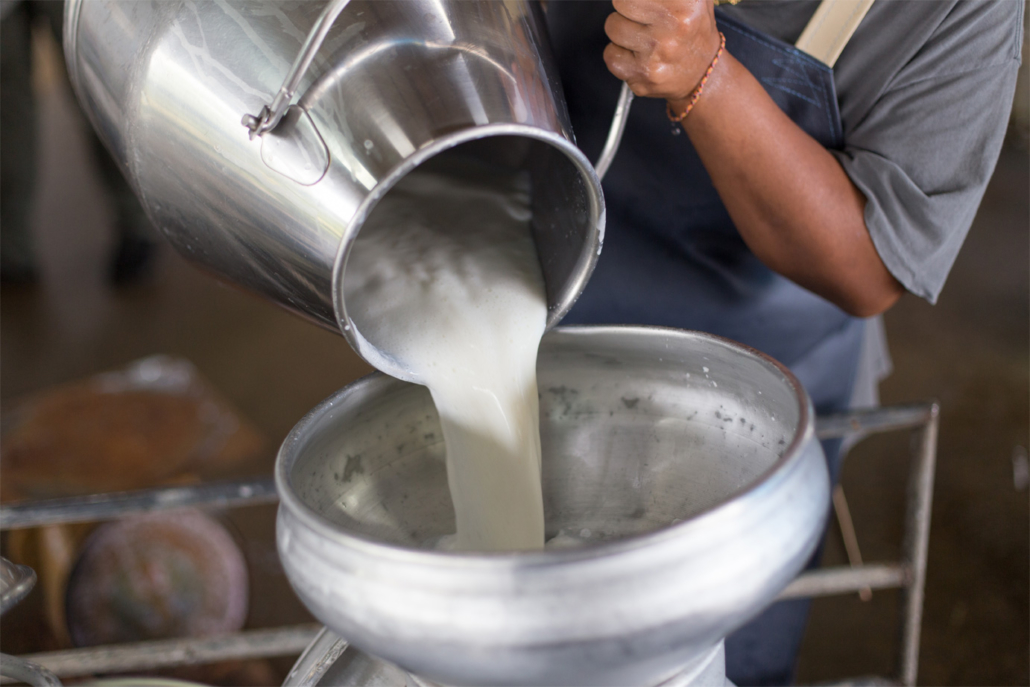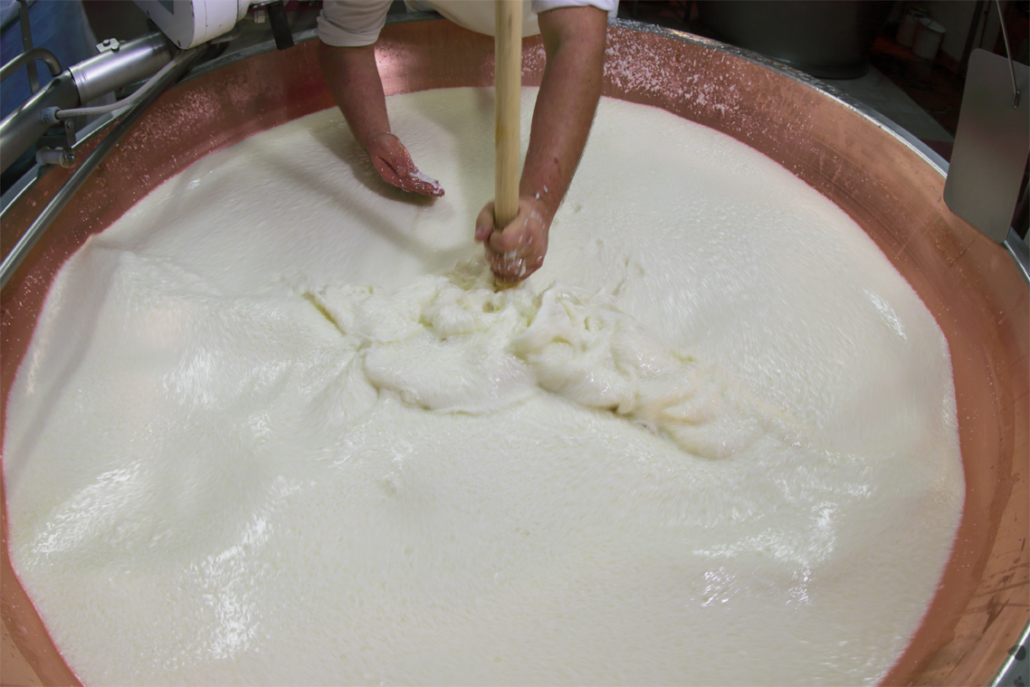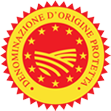Since then, the production technique has developed further; however, the concept of processing remained intact from the origins.
In fact, milk is processed into cheese by means of soft techniques, which maintain intact the original bacterial and microbial flora.
Essential ingredient for the production is raw, fresh milk that did not undergo energetic treatments.
In order to drive fermentation, they use a low-acid graft obtained by fermenting milk after a pasteurization involving low heat treatments.
Thus, natural milk ferments-peculiar of the production area, bovine breeds and type of hay products-multiply.


The classic processing technique foresees the separate collection of two milkings, with subsequent skimming of milk in the evening. The milk collected is places in boilers-usually in copper-where they add a starter culture to the extent of 0.5/1 Kg per hectoliter reaching a temperature of 32/34 °C and then adding rennet derived from dried stomachs of colostrum-deprived calves.
After about 20/25 minutes of coagulation, the gelatinous mass is cut by means of a relevant instrument, the lyre (named after the musical instrument dear to Nero).
Grains obtained have the size of rice.
Now the heating process begins and the temperature of the mass reaches 44/46 °C.

ATTIVITÀ REALIZZATA CON IL CONTRIBUTO DELLA
REGIONE AUTONOMA FRIULI VENEZIA GIULIA,
L.R. 25/2016, ART. 3, C. 21-25
CONSORTIUM FOR THE PROTECTION OF MONTASIO CHEESE
Vicolo Resia 1/2
33033 Codroipo (UD)
Tel. 0432-905317
Fax 0432-907509
info@formaggiomontasio.net
TIN 94012960301
VAT No. 01816290306
IL CONSORZIO